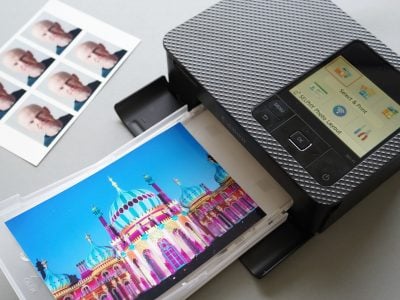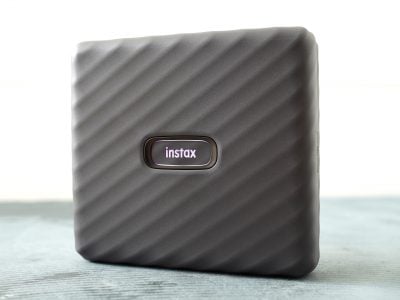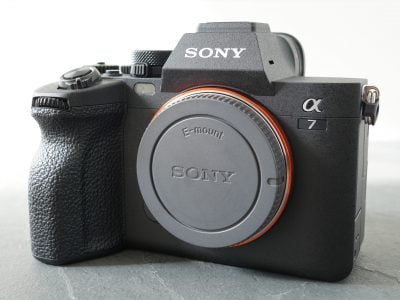Sigma DP1 Quattro
-
-
Written by Gordon Laing
Quality
|
Sigma DP1 Quattro JPEG at f5.6 | Fujifilm XT1 JPEG with 10-24mm at 18mm f5.6 | |
 | ||
f5.6, 100 ISO | f5.6, 200 ISO | |
 |  | |
f5.6, 100 ISO | f5.6, 200 ISO | |
 |  | |
f5.6, 100 ISO | f5.6, 200 ISO | |
 |  | |
f5.6, 100 ISO | f5.6, 200 ISO | |
 |  | |
f5.6, 100 ISO | f5.6, 200 ISO |
Sigma DP1 Quattro High Quality versus Super High Quality JPEG mode
 |
The DP1 Quattro has a native resolution just shy of 20 Megapixels, but Sigma argues the sensor resolution could be described as 39 Megapixels if you interpolate and calculate in the same way as conventional mosaic filtered sensors. Indeed the DP1 Quattro even offers a Super High quality option that’ll interpolate the image to 39 Megapixels as you take them, or develop RAW files in-camera.
To find out if it actually made a difference and captured finer detail, I took two photos with the DP1 Quattro using the High and Super High JPEG options, and made a selection of crops presented at 100% below for comparison. Note these photos were taken on a different day to my comparison above, and this time I had purple fringe correction disabled as it is as standard. Tone Control was set to the default Mild.
I don’t know about you but I can’t see any more detail on the interpolated file than the original 19 Megapixel version – indeed it looks a lot like the original file magnified a further step, albeit with slightly smoother stepping. The interpolated file is also making the noise and coloured fringing artefacts more obvious. Both files are available from my sample images page, so feel free to download and compare them yourself. I’m fairly convinced though that the Super High interpolated option won’t capture finer details and is simply generating a bigger file for smooth output on big prints.
I have one more comparison further down this page against the Olympus OMD EM1, but if you’ve seen enough, check out my Sigma DP1 Quattro noise results or skip straight to my verdict!
Sigma DP1 Quattro JPEG at f5.6 High Quality (5424×3616 Native resolution) | Sigma DP1 Quattro JPEG at f5.6 Super High Quality (7680×5120 Interpolated res) | |
 |  | |
f5.6, 100 ISO | f5.6, 100 ISO | |
 |  | |
f5.6, 100 ISO | f5.6, 100 ISO | |
 |  | |
f5.6, 100 ISO | f5.6, 100 ISO | |
 |  | |
f5.6, 100 ISO | f5.6, 100 ISO | |
 |  | |
f5.6, 100 ISO | f5.6, 100 ISO |
Sigma DP1 Quattro vs Olympus OMD EM1 JPEG quality
 |
In my final outdoor comparison I shot with the Sigma DP1 Quattro and the Olympus OMD EM1, the latter fitted with the Lumix 7-14mm zoom to match the field of view. An equivalent prime could have been preferable, but in my tests the 7-14mm can match or even exceed the quality of alternative primes in the desired range, so I’m happy with it in this comparison.
Once again we’re seeing a similar result to my first comparison against the Fujifilm XT1. The Sigma DP1 is resolving finer detail and delivering a noticeably crisper result, but there’s visible noise which suggests low noise reduction and high sharpening. Turn down the NR and boost the sharpening on the Olympus – and Fujifilm – and you’ll also see a sprinkling of noise with crisper details, so this is something I look forward to comparing on their respective RAW files once the DP1 Quattro is supported in Adobe Camera RAW.
Note purple fringing correction was disabled on the Sigma here and there’s certainly clear evidence of chromatic aberrations. Now check out my Sigma DP1 Quattro noise results, my Sigma DP1 Quattro sample images, or skip straight to my verdict.
Sigma DP1 Quattro JPEG at f5.6 | Olympus OMD EM1 JPEG with Lumix 7-14mm at f5.6 | |
 |  | |
f5.6, 100 ISO | f5.6, 200 ISO | |
 |  | |
f5.6, 100 ISO | f5.6, 200 ISO | |
 |  | |
f5.6, 100 ISO | f5.6, 200 ISO | |
 |  | |
f5.6, 100 ISO | f5.6, 200 ISO | |
 |  | |
f5.6, 100 ISO | f5.6, 200 ISO |
Sigma DP1 Quattro vs Olympus OMD EM1 Noise JPEG
 To compare noise levels under real-life conditions, I shot this scene with the Sigma DP1 Quattro and Olympus OMD EM1 within a few moments of each other at each of their ISO settings. I fitted the EM1 with the Lumix 7-14mm zoom in order to match their coverage. Both cameras were set to f5.6 in Aperture Priority. Both cameras were set to RAW+JPEG. I’m presenting the JPEG results here and will add RAW results once the DP1 Quattro is supported in Adobe Camera RAW.The sequence below starts at 100 ISO, the base sensitivity for the Sigma, but an extended Low setting for the Olympus. Comparing the two crops it’s immediately clear how the DP1 Quattro is recording much finer details, and I can confirm it was more authentic at measuring the white balance too as the melted candle wax was the pink colour you see on the left column rather than the redder hue of the Olympus on the right. But look closely at the background and there’s already a sprinkling of noise in the shadows. To compare noise levels under real-life conditions, I shot this scene with the Sigma DP1 Quattro and Olympus OMD EM1 within a few moments of each other at each of their ISO settings. I fitted the EM1 with the Lumix 7-14mm zoom in order to match their coverage. Both cameras were set to f5.6 in Aperture Priority. Both cameras were set to RAW+JPEG. I’m presenting the JPEG results here and will add RAW results once the DP1 Quattro is supported in Adobe Camera RAW.The sequence below starts at 100 ISO, the base sensitivity for the Sigma, but an extended Low setting for the Olympus. Comparing the two crops it’s immediately clear how the DP1 Quattro is recording much finer details, and I can confirm it was more authentic at measuring the white balance too as the melted candle wax was the pink colour you see on the left column rather than the redder hue of the Olympus on the right. But look closely at the background and there’s already a sprinkling of noise in the shadows.As the sensitivity increases, the noise becomes more obvious on the Sigma, but remains ironed-out by processing on the Olympus. But even at 400 ISO the DP1 Quattro is still delivering greater detail. At 800 ISO though the DP1 Quattro takes a turn for the worse. The noise levels have increased to a point where the detail is similar to the Olympus, and the overall colour is becoming de-saturated. There’s a huge drop in quality at 1600 ISO for the Sigma which has become very muddy with a further fall in colour saturation. The Olympus easily beats it here. And it’s downhill fast for the DP1 Quattro from here on with significant increases in noise, fuzziness and a dramatic drop in colour that sees some portions of the image become almost black and white, especially at the maximum sensitivity of 6400 ISO. The smaller Micro Four Thirds sensor employed by Olympus is rarely celebrated for its high ISO performance, but in this comparison it takes an easy lead over the Sigma above 800 ISO, which traditionally-filtered APSC sensors will extend an even further. I’ll be adding a RAW noise comparison when the DP1 Quattro is supported by Adobe Camera RAW, but I think it’s safe to say this is not a camera you’ll want to use above 800 ISO, or even 400 ideally. Indeed for the best results stay at the very lowest sensitivities, and if you’re in low light, bring a tripod. You can see more examples of the DP1 shining at low ISOs and struggling at high ones in my Sigma DP1 Quattro sample images. Or if you’ve seen enough, skip straight to my verdict.
|





















